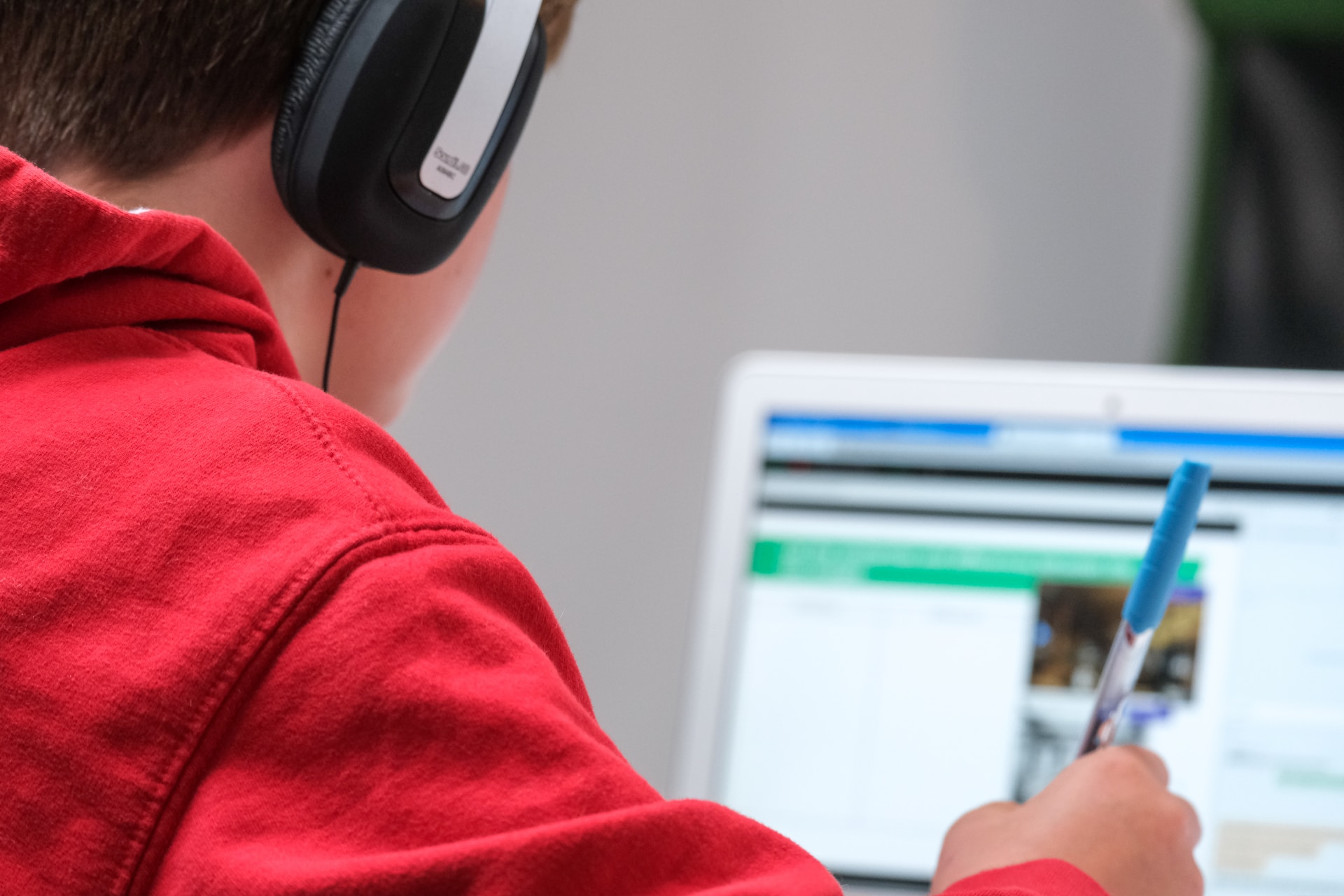
eLearning gamification in the higher education sector is on the rise, and for good reason, too. Over 65% of students highlight that gamified learning experiences prove more engaging and motivational than traditional pedagogical methodology, with LMS experts agreeing that gamification continues to be essential to educational efforts in higher education.
With the gamification market anticipated to reach a global value of $30.7bn by 2025, it’s clear that this area of eLearning continues to evolve and ensure that trainees and students everywhere can benefit from captivating academic opportunities.
This guide will take a closer look at this fertile area of research and development, answering the question of “what is gamification in eLearning?” and providing some real-world gamification examples that are in use in 2023. After this, we’ll explore how to use gamification in eLearning, noting the benefits of gamification in eLearning for the higher education sector. Before we close, we’ll highlight some developments coming in the not-too-far-away future for eLearning gamification.
What is Gamification in eLearning
So, what is gamification in eLearning? With the rise and continued popularity of eLearning gamification, multiple examples exist across the broad range of learning management systems and online platforms that students utilise on a daily basis, including:
- Quizzes
- Interactive Video Content
- Simulations
- Leaderboards
- Games
Various game design techniques and principles are drawn upon to enhance the interactivity and relevance of the various gamification examples in higher education. From personalisation, which allows learners to tailor their experiences to their unique needs, to the utilisation of narrative, whereby a story or scenario is created which can contextualise the concept being studied, the creators of this software ensure that students encounter meaningful and relevant learning opportunities.
Whilst not all gamification examples are alike, the developer and designers’ aims remain the same: providing learners with an engaging, motivational, and—most importantly—interactive experience.
The Benefits of Gamification in eLearning
The benefits of gamification in eLearning are numerous, especially within the higher education environment, where students will begin to encounter increasingly complex topics and issues alongside an increased need for self-directed study.
By encouraging students to take an active role in their educational experiences, eLearning allows educators to encourage accountability in the academic environment, with students able to track their progress and action feedback rapidly, rather than waiting for marks to come back from class teachers. This promotes a mindset that lends itself well to not only the higher education environment but the workplace, too. Learners should set their own goals and keep track of progress, setting them in good stead when they begin or continue their careers.
eLearning gamification is linked to a significant enhancement of student productivity, with recent data noting a 50% improvement in the amount of work students complete during study periods.
By making the learning experience more fun, students and educators generally report higher levels of knowledge retention, too. Leaderboards, achievements, and other methods which encourage students to regularly return to maintain their position encourage the reinforcement of the concepts and problems being studied, helping them to understand information on a deeper level.
A 2021 study detailing empirical evidence of the benefits of gamification in eLearning—particularly as it applies to the higher education sector—saw researchers reporting that gamification supports the development of skills needed within the current workplace. Competencies such as collaboration, active listening ability, and the practical application of knowledge were strengthened. At the same time, gamification also caters to students’ interests and increases the satisfaction they gain from the educational experience.
Real-World Gamification Examples
Now that we understand enough to answer the question of “What is gamification in eLearning?”, we can explore some real-world gamification examples that have shown success in higher education.
1. Scavify
Scavify is the self-professed “most interactive scavenger hunt app in the world.” The organisation’s app encourages users to complete challenges and track their progress, earning rewards and enabling educators to track students’ progress.
It’s found success in helping new arrivals and prospective students navigate campus spaces and motivating learners to interact with the range of events on offer across an institution’s footprint.
Within higher education, it’s helping students and academic staff to better orient themselves when they’re new to the environment, reducing the risk of attrition, encouraging social interaction between learners, and helping to share the often unique culture that each academic institution possesses.
2. Habitica
With an approach that seeks to gamify the everyday responsibilities that learners possess, Habitica acts as a role-playing game which aims to improve learners’ daily tasks—reinforcing positive progress learners have made towards their goals through the rewarding of wearable “gear” that they can kit their in-game avatars out with.
Like many role-playing games, Habitica encourages its users to play together and share the eLearning experience with built-in mechanisms for friendly competition and collaboration. Students are inspired to gain more points and increase the strength of their characters to defeat in-game monsters. These creatures stand in for the tasks they need to complete that day—since letting themselves down also lets their team down.
3. Edpuzzle
Edpuzzle is unique in this list of gamification examples due to its focus on interactive video content—with a strong emphasis on self-paced, visual, and bite-sized experiences. Educators can create their own videos and insert multiple-answer and open-ended questions at any point in the timeline, enabling students to receive immediate feedback on the areas that require more work.
At the same time, teaching and administration staff are empowered by a suite of data analytics software, which details everything from attainment, the number of correct responses offered to questions, to the number of times a student watched each section. This means that content can be refined if many class members are repeatedly returning to the same part of a video.
4. Kahoot!
An eLearning gamification tool that seeks to enhance the experience of utilising flashcards and study groups to enhance revision, Kahoot! is becoming increasingly popular within higher education. It helps students refresh their knowledge on the go through dedicated mobile and desktop applications.
When it comes to collaboration, Kahoot! also encourages students to create engaging and enticing presentations for their classmates, enabling them to create gameshow-like experiences within the higher education environment. Learners are able to challenge one another through daily and weekly learning tasks.
5. Quizlet
Offering an excellent example of how to use gamification in eLearning, Quizlet combines aspects of note-taking apps, an AI tutor, and practice tests to help students rapidly create flashcards and outlines. This enables them to retain more information and effectively prepare for examinations.
Alongside this suite of AI-enhanced tools, Quizlet utilises a library of academic textbooks to enable students to quickly search for answers to even the most complex questions, from chemistry to physics and business to engineering.
This is just a small selection of the eLearning gamification examples that are available to educators—with many others supporting students to study everything from touch-typing to the study of languages and programming.
It’s clear that the benefits of gamification in eLearning are only just starting to be realised, and we’ll soon discuss the future of eLearning gamification within the higher education environment. Before that, though, we’ll discuss how you can begin to incorporate gamification into the pedagogical approach, using it to support and enhance traditional, classroom-based learning experiences.

How to Use Gamification in eLearning
eLearning gamification can be a useful way for educational organisations to begin enhancing their traditional, classroom-based activities with concepts and methodologies drawn from game design. As we’ve already seen, a robust body of evidence highlights the benefits of gamification in E-Learning, from improving engagement and attainment to inspiring students to take ownership and accountability for their own educational experiences.
So, what should educators do to enhance their understanding of how to use gamification in eLearning?
Consider Friendly Competition
Whether it’s achievements, points which enable them to move up a leaderboard, badges, or rewards, friendly competition can help engage students and motivate them to spend additional time studying outside the seminar room or lecture hall.
Many of the gamification examples that we explored allow educators to create assignments or quizzes that will then be embedded within the content they provide to learners. Alongside offering badges or achievements for reaching certain milestones—such as a specific amount of time spent studying—eLearning gamification can ensure that students are preparing for critical exams or coursework.
Interactivity is Vital
Whether it’s chemistry, physics, geometry, or engineering, providing learners with interactive simulations and video content can help to contextualise the often complex concepts they’ll encounter.
Even within the humanities and social sciences, where much of what is studied will be based on existing literature, providing interactive timelines with a rich range of information for students can help them to remember the key dates of historical events, for instance.
Enable Students to Track Their Own Progress
Part of encouraging students to take ownership of their own studies and attainment is giving them a robust way to monitor their growth and evaluate feedback. This enables them to recognise their strengths and weaknesses and focus their studies on areas that require improvement.
Whether it’s a progress bar that shows them how much content is left before they can take a break, or a dashboard that illustrates all of their scores across multiple courses, tracking progress is an important but often forgotten aspect of self-improvement and motivation that we obfuscate at our own risk.
Use Games Within the Traditional Learning Environment
eLearning gamification doesn’t just need to be relegated to the revision session or students’ self-directed work—it can also help to make classroom-based sessions more interactive, engaging, and collaborative.
Of course, a clear example is the use of points-based systems to reward correct answers to specific questions, which tie into students’ personal accounts on eLearning gamification platforms. Aside from this, however, there are plenty of uses for the technologies in our list of gamification examples that can be used to incentivise discussion and participating in group-based tasks, such as Habitica’s take on the roleplaying game “party” system, in which learners are motivated to perform well to prevent harming the rest of their group.

The Future of elearning Gamification in Higher Education
Now that we’ve answered the question of how to use gamification in eLearning to enhance traditional, classroom-based approaches to study, we can look in a bit more detail at the future of eLearning gamification. What are the technologies, platforms, and approaches that are inspiring the next generation of eLearning gamification designers and developers as they produce the tools that will continue to enhance pedagogy?
1. Increasing Personalisation
Personalised approaches to education will continue to play a major role in eLearning gamification as we move further into the decade. As designers and developers leverage AI, data analytics, and mobile learning, they will be increasingly able to tailor content to learners’ individual needs and preferences—whether they attain more with text-based or visually-focused approaches to study.
This will help students take greater ownership of their attainment, incentivising them to control the pace of their revision and work and providing immediate feedback on progress, which can be utilised to tailor the content they’ll receive in later courses and modules.
2. Virtual Reality
Providing truly immersive, visually stunning experiences, the potential of virtual reality (VR) is being quickly realised within the higher education environment. VR-focused eLearning organisations note the potential of the technology to drive attainment and diversity within higher education, with Arizona State University’s partnership with augmented reality/virtual reality firm Dreamscape showing that students who utilise VR in the learning environment earn higher grades.
When it comes to eLearning gamification, educators will be able to bring subjects to life. Engineering students are able to stress-test building, automotive, and aerospace designs in a risk-free environment, chemistry students are able to explore complex 3D renderings of molecules, and mathematics students are able to visualise the complex geometries they’re working with.
3. An Emphasis on Micro-Learning
Whether you’re a student or a teacher, everyone is leading a busier life nowadays. As a result, a major focus of eLearning gamification over the last few years has been the increased breaking-down of complex concepts and course materials into bite-sized, easily digested and retained micro-learning experiences.
As learners become increasingly mobile, micro-learning allows educators to connect with their students and deliver modules on the go, with gamification tools incentivising students to revise and complete assigned tasks on the way to and from other engagements.
With the rapid cadence of technological advancement, it’s clear that the question of “what is gamification in eLearning” will need to be revisited multiple times before the close of the 2020s—a future we’re all too excited to be a part of. The benefits of gamification in E-Learning continue to prove themselves, with a broad range of empirical studies validating our understanding that interactivity and game design elements help to enhance the rate of student success within the higher education environment.
Key Takeaways
The rise of eLearning gamification in higher education is a significant and promising development. With increasing numbers of students finding gamified learning experiences more engaging and motivating, the gamification market is projected to reach and enhance the studies of ever-greater numbers. This trend is here to stay—and evolve.
Through various real-world gamification examples, such as Scavify, Habitica, Edpuzzle, Kahoot!, and Quizlet, educators are witnessing tangible benefits, with these platforms helping to improve student productivity, knowledge-retention, and skills development. These outcomes not only benefit learners in their academic careers but also prepare them for success in the workplace.
Furthermore, incorporating gamification into eLearning can promote friendly competition, interactivity, and the self-tracking of progress, fostering a sense of ownership and accountability amongst learners and providing educators with the potential to transform traditional, classroom-based courses into more engaging and collaborative experiences.
Looking ahead, the future of eLearning gamification holds a range of exciting prospects. Personalisation, virtual reality, and micro-learning are poised to reshape the landscape, enabling tailored educational experiences, immersive learning opportunities, and on-the-go access to bite-sized content.
As these technologies and platforms continue to advance, the benefits of gamification in eLearning will persist, supporting student success in higher education well into the 2020s and beyond.
Sourcing Specialists in eLearning Gamification
Instinct Resourcing has recruited experts in eLearning gamification for over a decade. Our specialist consultants are proud to champion the sector, providing the time-served expertise you need to source and retain candidates for your vacant virtual learning and LMS roles.
If you’d like to learn more, get in touch with us today for a conversation about your requirements.



